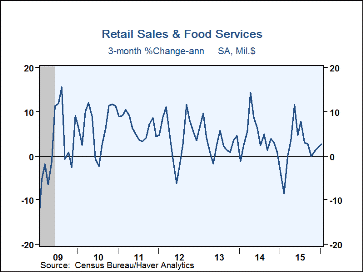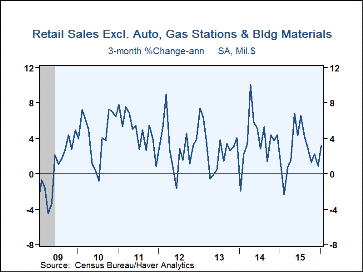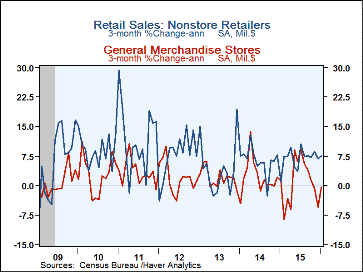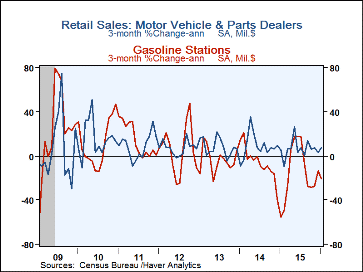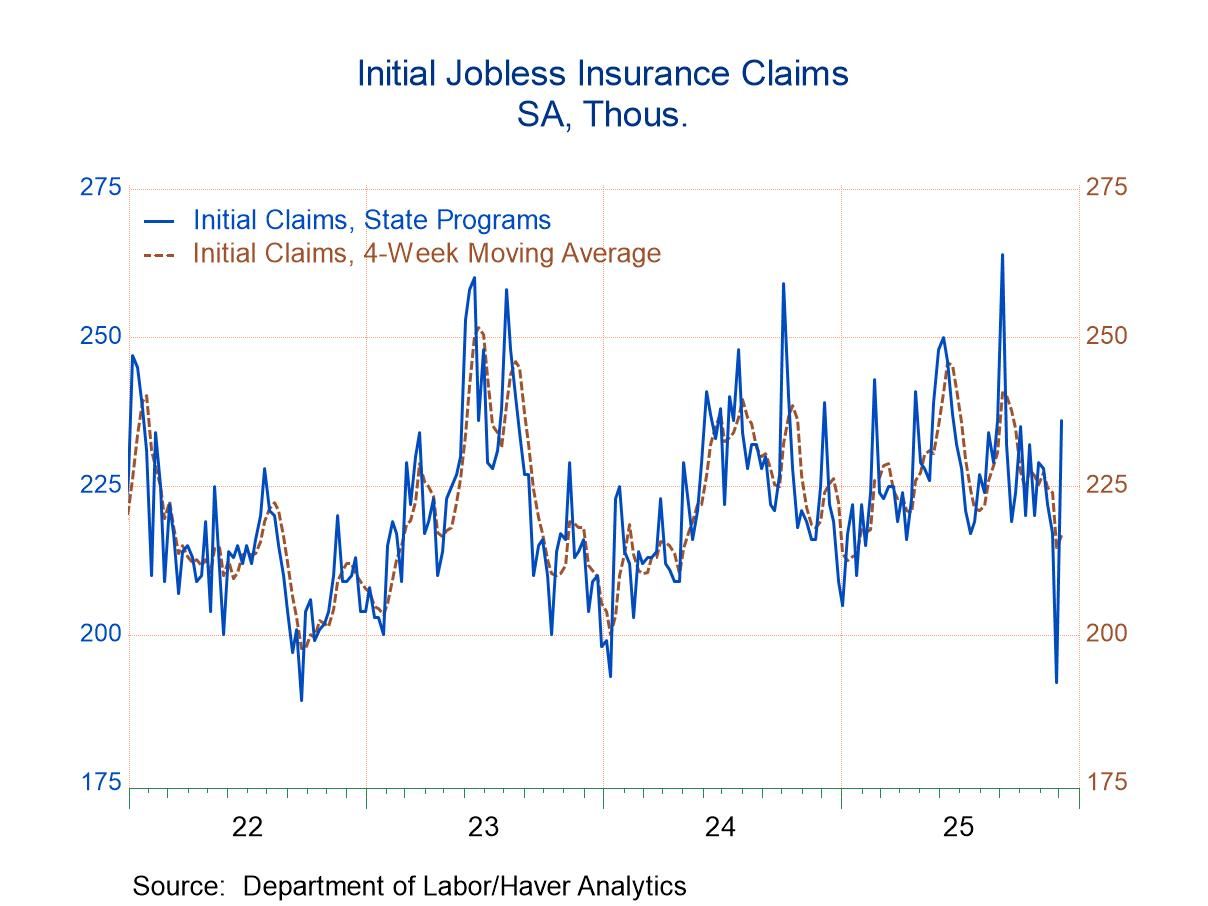 Global| Feb 12 2016
Global| Feb 12 2016U.S. Retail Sales Increase Broadly; Less Is Spent on Gasoline
by:Tom Moeller
|in:Economy in Brief
Summary
The consumer reaped the benefit from lower gasoline prices last month and ramped up spending elsewhere. Retail sales gained 0.2% during January (3.4% y/y) following a 0.2% December rise, revised from -0.1%. A 0.1% uptick had been [...]
The consumer reaped the benefit from lower gasoline prices last month and ramped up spending elsewhere. Retail sales gained 0.2% during January (3.4% y/y) following a 0.2% December rise, revised from -0.1%. A 0.1% uptick had been expected in the Action Economics Forecast Survey.
Motor vehicle sales increased 0.6% (6.9% y/y), about the same as during the prior two months. The rise reflected a 1.4% increase in unit motor vehicle purchases. Retail sales excluding autos edged 0.1% higher (2.5% y/y), the same as in December. No change had been expected. Lower prices prompted a 3.1% decline (-8.1% y/y) in sales at gasoline service stations. Dining out also was less in vogue as restaurant sales fell 0.5% (+6.1% y/y). Finally, warm weather prompted a 0.6% increase (5.0% y/y) in building materials. Retail spending excluding these categories increased 0.6% (3.1% y/y). It recouped a 0.3% December decline and served as the largest increase since May.
Sales at nonstore retailers led the improvement with a 1.6% rise (8.7% y/y) after a 0.1% dip. These sales account for 10.6% of the total, up from 7.4% ten years ago. General merchandise store sales posted a 0.8% increase (0.9% y/y) following a 0.9% shortfall. Clothing & accessory store sales gained 0.2% (2.2% y/y) after a 0.1% dip. Electronics & appliance store sales improved 0.1% (-4.2% y/y) following three months of sharp decline. To the downside by 2.1% (+9.1% y/y) were sporting goods, hobby, book & music store sales after a 1.9% rise. Furniture & home furnishing store sales also were off 0.5% (+4.0% y/y) after a 0.7% gain.
Food & beverage store sales increased 0.5% (2.0% y/y) following a 0.3% easing. Health & personal care store sales were little changed (3.5% y/y) for the second straight month.
The retail sales figures are available in Haver's USECON database. The Action Economics figures are in the AS1REPNA database.
The Household Debt and Credit Report is the topic of today's comments by William C. Dudley, President & CEO, Federal Reserve Bank of New York, and they can be found here.
| Retail Spending (%) | Jan | Dec | Nov | Jan Y/Y | 2015 | 2014 | 2013 |
|---|---|---|---|---|---|---|---|
| Total Retail Sales & Food Services | 0.2 | 0.2 | 0.3 | 3.4 | 2.1 | 3.9 | 3.7 |
| Excluding Autos | 0.1 | 0.1 | 0.3 | 2.5 | 0.9 | 3.1 | 2.7 |
| Non-Auto Less Gasoline, Building Supplies & Food Services | 0.6 | -0.3 | 0.5 | 3.1 | 3.0 | 3.3 | 2.7 |
| Retail Sales | 0.3 | 0.0 | 0.3 | 3.1 | 1.4 | 3.7 | 3.8 |
| Motor Vehicle & Parts | 0.6 | 0.5 | 0.6 | 6.9 | 7.0 | 7.5 | 8.3 |
| Retail Less Autos | 0.2 | -0.1 | 0.2 | 1.9 | -0.2 | 2.6 | 2.6 |
| Gasoline Stations | -3.1 | -0.5 | -2.0 | -8.1 | -19.4 | -2.7 | -0.7 |
| Food Service & Drinking Places Sales | -0.5 | 1.3 | 0.7 | 6.1 | 8.1 | 6.2 | 3.4 |
Tom Moeller
AuthorMore in Author Profile »Prior to joining Haver Analytics in 2000, Mr. Moeller worked as the Economist at Chancellor Capital Management from 1985 to 1999. There, he developed comprehensive economic forecasts and interpreted economic data for equity and fixed income portfolio managers. Also at Chancellor, Mr. Moeller worked as an equity analyst and was responsible for researching and rating companies in the economically sensitive automobile and housing industries for investment in Chancellor’s equity portfolio. Prior to joining Chancellor, Mr. Moeller was an Economist at Citibank from 1979 to 1984. He also analyzed pricing behavior in the metals industry for the Council on Wage and Price Stability in Washington, D.C. In 1999, Mr. Moeller received the award for most accurate forecast from the Forecasters' Club of New York. From 1990 to 1992 he was President of the New York Association for Business Economists. Mr. Moeller earned an M.B.A. in Finance from Fordham University, where he graduated in 1987. He holds a Bachelor of Arts in Economics from George Washington University.


